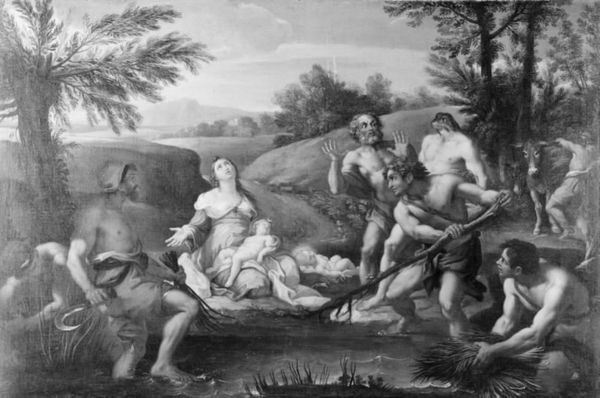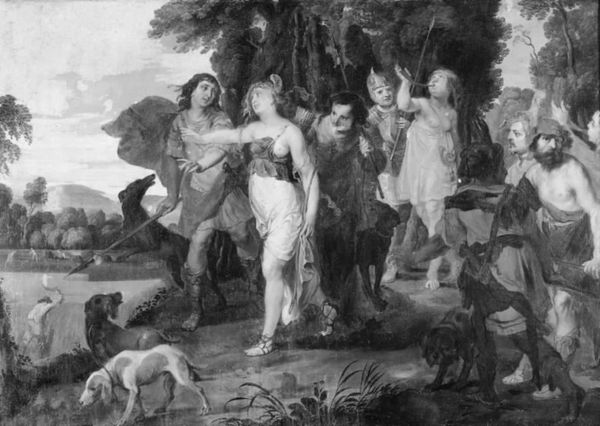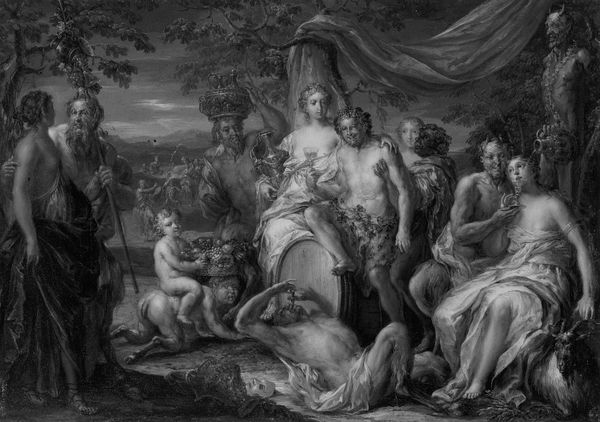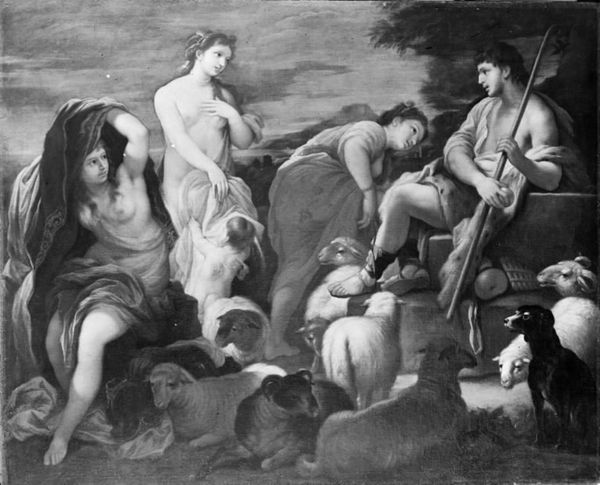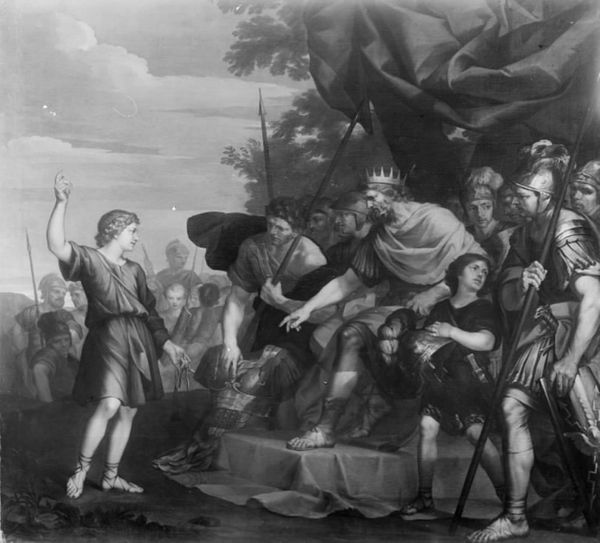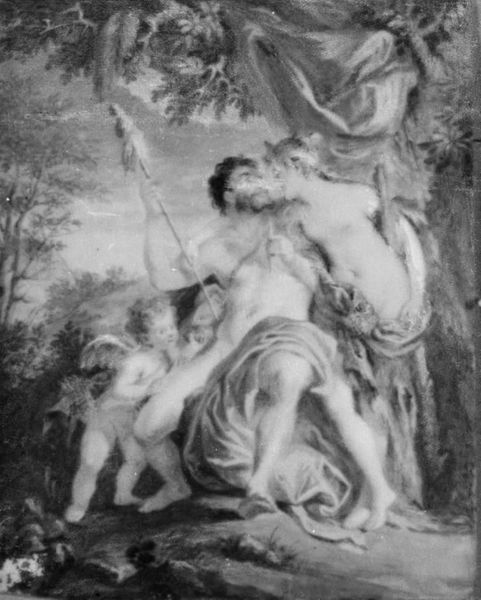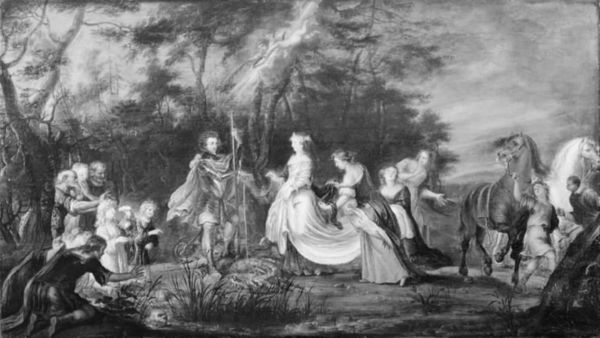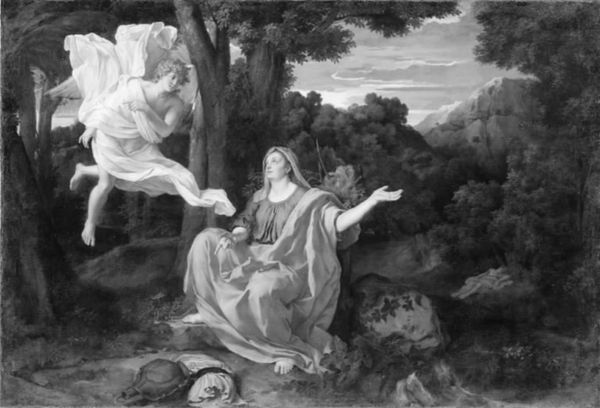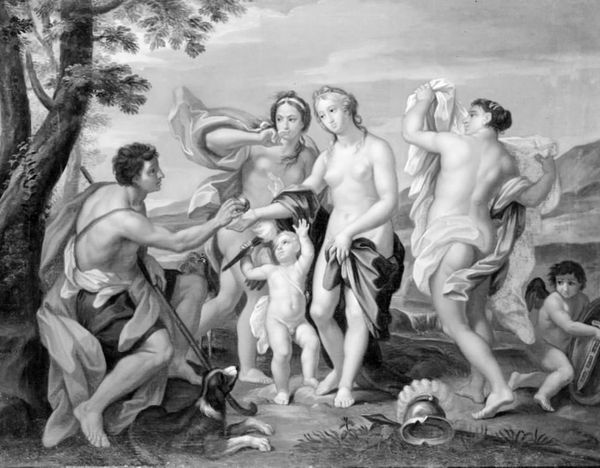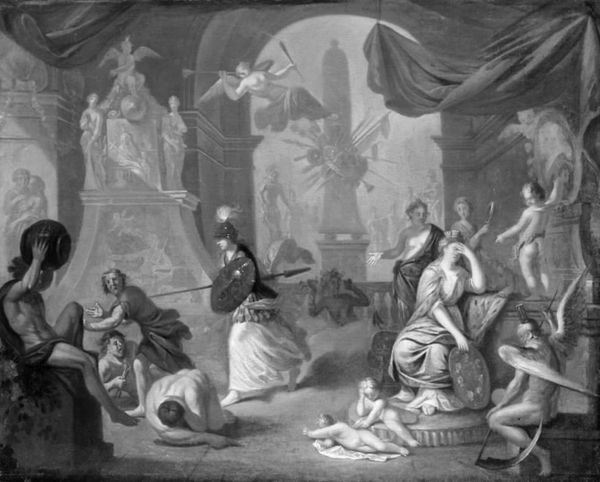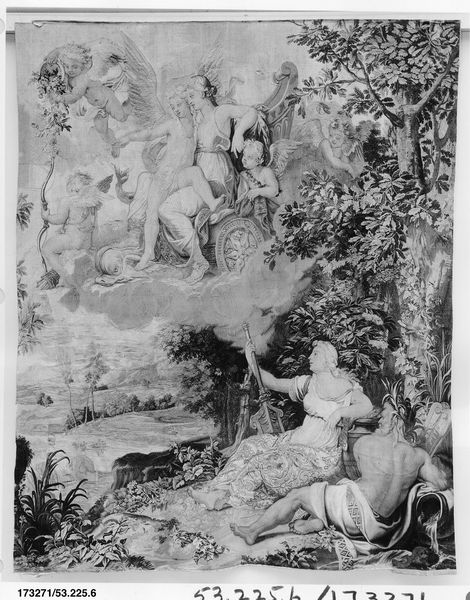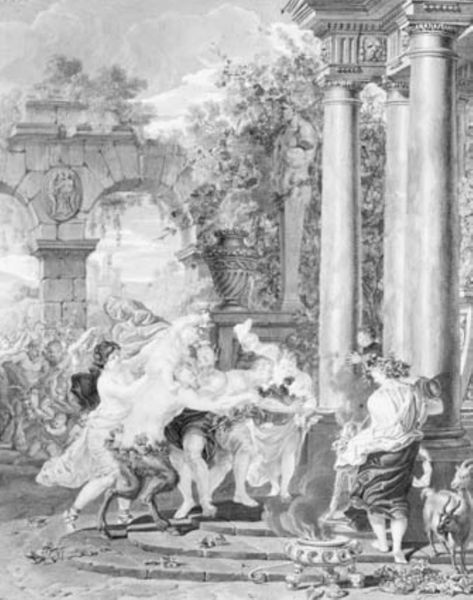
painting
#
allegory
#
baroque
#
painting
#
landscape
#
figuration
#
history-painting
#
realism
Dimensions: 65.5 cm (height) x 78.5 cm (width) (Netto)
Curator: Here we have Hendrik Krock’s "Moses Found in the Nile by Pharaoh's Daughter," completed in 1715. What catches your eye? Editor: Initially, the stark contrast between the light, almost luminous figures, and the dark, overgrown riverbank strikes me. The composition is cleverly structured to draw the eye directly to the baby Moses. Curator: Yes, Krock is setting the stage for the future leader. In religious iconography, the act of 'finding' is powerful; it speaks of destiny, of revelation. The Pharaoh's daughter isn't just discovering a child; she is encountering a symbol of hope for the Israelites. Editor: And she is beautifully staged in relation to that symbol of hope! Her gesture, reaching towards Moses, has this graceful curvature mirrored throughout the drapery and figures surrounding the child. See how that echoing arc binds everyone in this pivotal moment. Curator: Absolutely! The visual vocabulary emphasizes not only divinity but the maternal protection extending from the woman holding Moses. Her gaze toward Pharaoh’s daughter carries gratitude but also an understanding of what this rescue means for the child's safety. Krock highlights a narrative of intercession and survival against formidable odds. Editor: Looking more closely at the landscape in the background—the architecture almost feels secondary. Perhaps deliberately. It reinforces the idea that societal constructs exist almost to challenge the more meaningful dramas unfolding at the micro-level? Curator: Very insightful. The historical context enhances our viewing. Krock was working within the Baroque period. Works produced during that era often had underlying cultural significance in conveying theological or political meanings. Editor: This piece resonates as it is about more than visual aesthetics. It evokes questions around power, motherhood, and what responsibility we have to protect others in need. Curator: Indeed, Hendrik Krock compels us to consider both the beauty and underlying importance of narratives that continue to shape how we interact with culture today. Editor: The artist skillfully balances symbolism with subtle compositional touches. Fascinating.
Comments
No comments
Be the first to comment and join the conversation on the ultimate creative platform.
